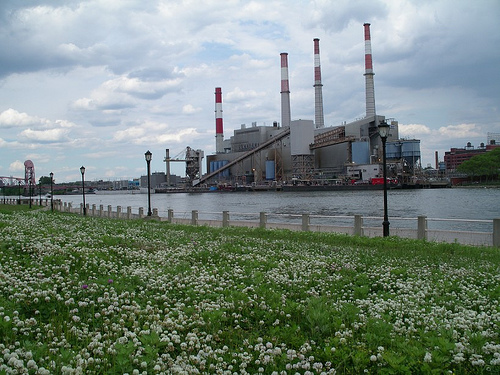 Photo: rutloOur nation is in the midst of some serious energy and water problems, but what many may not realize is that these two issues are very closely linked (see the recent Wall Street Journal article on this topic). The truth is that energy and water are related in just about every way you can imagine and in ways that affect our lives everyday — down to the lights and water in our homes that we too often take for granted. The water supply sector utilizes large amounts of energy to transport, treat, and deliver water. On the flip side, vast quantities of water are required to generate power.
Photo: rutloOur nation is in the midst of some serious energy and water problems, but what many may not realize is that these two issues are very closely linked (see the recent Wall Street Journal article on this topic). The truth is that energy and water are related in just about every way you can imagine and in ways that affect our lives everyday — down to the lights and water in our homes that we too often take for granted. The water supply sector utilizes large amounts of energy to transport, treat, and deliver water. On the flip side, vast quantities of water are required to generate power.
First let’s start with how much water is used for energy. The United States thermoelectric industry uses 3.3 billion gallons of water every year [PDF]. That is 20 percent of all the water consumed in the country for non-agricultural uses. This number is currently predicted to grow to 7.3 billion gallons by the year 2030. Water is used in all stages in the creation of energy — to extract, process, refine, and transport the fuels to power-generation sources. The power plant itself also uses vast amounts of water [PDF], particularly for the towers that cool the water heated in the generators.
Next, consider the energy used to produce and deliver water. California was among the first states to take a close look at this [PDF]. They discovered that almost 20 percent of all the electricity used in the state was used to supply and treat water. On average, 75 percent of the costs of producing municipal water are electricity costs related to capturing, treating, distributing, and using water. After the water is used, more energy is required to treat the wastewater.
To illustrate this point for Texas, I recently authored a report with the University of Texas to provide guidance for how the state can better integrate water and energy supply planning for the future. Check out the report to see our recommendations for steps Texas can take now to create a framework for more collaboration between energy and water planners and guidelines for improving data on the energy-water relationship.
As cities continue to grow, particularly in water scarce areas, these linkages between water and energy use are becoming more important. A growing community needs more power, which requires more water, which uses more power, and so on. Understanding this relationship highlights the importance of conserving water and practicing energy efficiency. For every kilowatt saved, water is also saved. For every gallon of water not used, energy demand is reduced. Investments in and incentives for energy and water conservation must be our highest priority.




